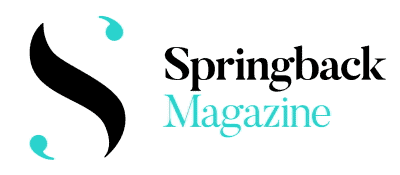Springback Academy 2016
Review

Collective Loss of Memory
DOT504/RootlessRoot
How to clap…
How to clap when a work ends and you don’t want to celebrate? A slow hidden build of violence, a nagging sensation of unease: this is what Collective Loss of Memory throws at you. Virile, cocky, assured men demand the stage. Gravity is no barrier, the air is not distant and unworkable: their bodies assault the space and angrily, seductively, slowly, frantically imprint the air with their leonine pathways. There is no boundary uncrossed. To touch is to wrestle, to play is to bully, to laugh is to mock. And suddenly, we are beyond the theatre, we are put in the lens of a CCTV camera. We witness. We recoil. A body, now pulp, and a blurry figure, gaze averted. Should we have laughed? Should we have enjoyed the ride? Should we now… clap?
Furious desires of the body
We are in a war, and every war is war against women and children. RootLessRoot Comp. researches violence and Man as its source, through the language of contemporary dance intertwined with martial arts. Five young unbridled masculine dancers are in control of the Obersturmbannführer Penis. The performance jumps on us like a beast of prey wrestling on the floor and then slithering like a snake. It unveils the games of men, their obsessive competitiveness, blown up egos, their stamping on the pedals of adrenaline and their subliminal homosexuality. Furious desires of the body of Everyman are unchained. And yet the culmination still lies in ambush; it will stampede us like a herd of bulls. Only the merciful filter of the film screen prevents us from vomiting.
My reading of the choreographers´ message is: violence is a prolongation of a childish state of mind. And it is extremely contagious.
Nina Vangeli
Five male dancers are questioning who is a man and what is mannerly. The answer can be tricky. Most of the piece they seem like bunch of street kids, joking around, bursting with raw energy and intensive physicality, enjoying a bit rough games and sharing their ironic stance to the world, also in words. Sharp dancing language of urban fighters is aestheticised in poetic manner with fluid, smooth and even soft bodily communication. It’s a perfect lesson of group dynamics and captivating urban play of five distinctive characters. Almost till the end, when this youngsters in kind of vague dramaturgical line – transition is made mostly in single scene of poetical brawl with hands on face of the defeated – abrupt into harsh violent game, sketching the awakening of potential aggressive impulse into “as if” unavoidable act. Denying the Other is offered in the perspective of victim. Shaking torso says enough and shocking video just adds too much. Overall impression: mixed feelings.

